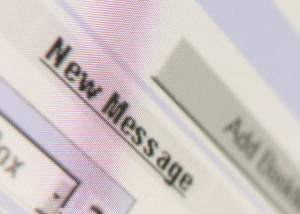 Everybody hates email, right? Aren’t you swamped? Don’t you feel overwhelmed knowing you’ll never be able to clear out your inbox? Complaining about email has become everyone’s favorite pastime – sure to find a sympathetic audience just about anywhere. Wasn’t it so much better before someone invented email?
Everybody hates email, right? Aren’t you swamped? Don’t you feel overwhelmed knowing you’ll never be able to clear out your inbox? Complaining about email has become everyone’s favorite pastime – sure to find a sympathetic audience just about anywhere. Wasn’t it so much better before someone invented email?
Was it? Some people have romanticized memories of the good old days. Others are simply too young to have any first-hand knowledge. So let me describe what business was like before email.
Before email, communication choices were pretty much limited to face-to-face, telephone or memo/letter.
- Face-to-face discussions required either scheduling a meeting or just dropping in on someone, taking your time and interrupting whatever work the other person was doing. If they weren’t in the same office, a meeting could cost half a day, and dropping in was just out of the question.
- Telephoning usually meant not reaching someone on the first try, having to leave a message with a person who may or may not have captured it accurately and/or remembered to deliver it. That was followed by their returning your call in a day or two, probably not reaching you, and having to go through the same uncertain message ritual. Round and round.
- Memos or letters had to be written out in longhand, and passed on to someone who would type them. Then they had to be proofread and/or revised, signed, and copied for the files; then sent by mail or inter-office delivery. On the receiving end, people had to wade through the stacks of paper they received, get to yours, and draft a response through the same process you had gone through. In a week or two you’d get an answer. Maybe.
Before email, keeping interested parties involved in, or informed about, a decision called for in-person meetings.
- It took multiple telephone calls to find a time that worked for everyone’s schedule.
- Someone had to take time to find a meeting venue that was available, affordable, and the right size.
- Attendees had to forgo other work for travel time as well as actual meeting time. If they had to travel to another city, they might have to sacrifice a couple of days for a meeting lasting a couple of hours. Not to mention the cost of airfare, hotel, meals and so forth.
- If an important participant couldn’t attend at the last minute, the meeting needed to be rescheduled, or someone had to take notes and write a summary of the proceedings. Decisions might have to be delayed.
- If the meeting took an unexpected turn requiring information that wasn’t readily available, things were at risk of coming to a halt.
- Meeting details, comments, opinions, decisions and follow-up assignments were subject to being lost, misunderstood, misremembered or forgotten unless someone took notes. Complete and accurate notes. And how likely was that?
Because of email, here’s how it works today:
- You create an email when it’s convenient for you; the recipient reads and acts on it when it’s convenient for him or her. No need to interrupt someone, have someone else type a letter or memo, or use up valuable time traveling to another site.
- Email delivery is extremely reliable, almost always guaranteeing that your message gets to your intended recipient. And it’s in writing; minimizing misunderstanding and making details available for easy reference.
- Email is transmitted almost instantly, dramatically increasing the speed at which decisions can be made and acted upon.
- If new information is needed during an email exchange it can be easily attached to an email for all to review.
- In seconds, you can add recipients in an email, either for input or for information, eliminating the time, cost and inconvenience of many meetings altogether.
Yes, we get too many emails. More than we can read and respond to some days. We need to make decisions about the amount of time we’re willing to devote to them, just like all the other tasks we juggle.
But go back to a time before email? Not me! How about you?







